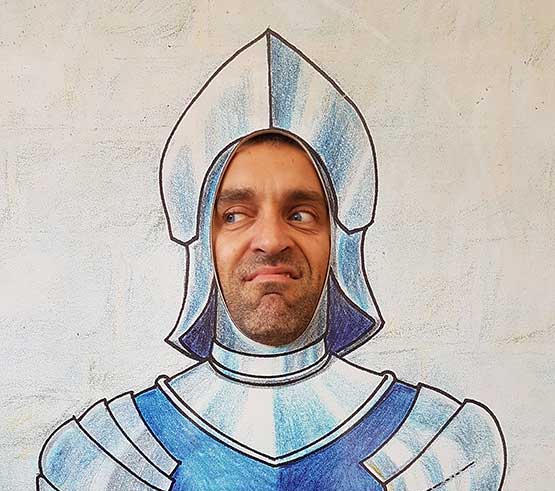Jimmy Wilde

Jimmy Wilde, by Library of Congress, via Wikimedia Commons
Jimmy Wilde (1892-1969) is arguably the greatest fighter ever produced by the UK, and a boxer worthy of consideration on any all-time list of the greatest pound-for-pound champions worldwide.
Nat Fleischer, the founder of Ring Magazine, said that the Welshman was the greatest flyweight of all time when he was called upon to name his top fighter in each of boxing’s classic eight weight divisions.
For its 2009 centenary edition, Boxing News called Wilde the best pound-for-pound British fighter of the previous 100 years, while former world heavyweight champion Gene Tunney called the Welshman “the greatest fighter I ever saw”.
The 5ft, 100lbs phenomenon was rated by Ring as the third greatest puncher of all time after Joe Louis and Sam Langford, and there can surely be few who have had more numerous, colourful or descriptive nicknames.
‘The Tylorstown Terror’, ‘the Mighty Atom’ and – most memorably – ‘the Ghost with the Hammer in his Hand’ were all monikers applied to the wonderful Wilde.
Born in Quakers Yard near Merthyr Tydfil and raised in poverty in Tylorstown, Wilde was working in the pits from a young age while supplementing his income in the boxing booths.
His knock-out exploits there have achieved legendary status, and he is thought to have engaged in many hundreds of bouts before his official professional record begins in 1911.
His remarkable, unique style would see him endeavour to always stay in range, using slight movements and sways to make his opponent miss and to expose his unfortunate foe to the Welshman’s concussive blows.
Wilde built a stunning winning record with an incredible knock-out ratio, his first major title coming in March 1914 when he stopped Eugene Husson to claim the European flyweight crown.
World War I slowed his progress, the boxer serving in the army as a sergeant instructor.
He was also finding it difficult to find suitable opponents at his weight and so would regularly take on – and beat – fighters who were much heavier than him.
The practice saw him fall to his first defeat in January 1915. Despite weighing in fully dressed, the Welshman gave away around 10lbs to Scottish great Tancy Lee and he was stopped in the 17th.
It was a defeat he would revenge on a long winning run that included a 14 February, 1916 stoppage win over Joe Symonds for the British title.
That clash was also unofficially billed as a world title bout, but Wilde would have to wait until his 125th professional fight in December 1916 for an official shot at the world crown.
At London’s Holborn Stadium he faced Italian-American Young Zulu Kid. The Brooklyn man – also known as the “Fighting Newsboy” – was three inches shorter than Wilde, and could not match the Welshman’s power or speed in a one-sided contest that ended in the 11th.
On the European stage the only blemish on Wilde’s record for the next three years was a 1918 three-round non-title points defeat to ‘Memphis’ Pal Moore, a defeat that Wilde would avenge over 20 rounds the following year.
By this point the champion was already past his peak, but it was only now that he embarked on the six-month tour of North America that would cement his worldwide reputation.
Wilde won 10 of those 11 bouts across the Atlantic, dropping just one newspaper decision in a ‘no-contest’ clash with Jackie Sharkey.
The Mighty Atom returned to Britain, where his practice of fighting heavier men finally caught up with him against the excellent bantamweight Peter Herman.
The American came in way over the agreed weight, but the Prince of Wales persuaded a reluctant Wilde to fight before a packed Royal Albert Hall.

The Prince of Wales congratulates Jimmy Wilde on his 1919 win over Joe Lynch at the National Sporting Club (Painting: William Howard Robinson)
The outgunned Welshman took a terrible beating that he never fully recovered from, the finale coming with a Herman punch in the 17th round that sent Wilde through the ropes and gave him severe concussion as his head cracked the ringside floor.
The Tylorstown man went into much-deserved retirement, but two years later a huge purse of £13,000 and the prospect of another headline show across the Atlantic tempted him back to fight Pancho Villa.
The Filipino – real name Francisco Guilledo – is considered by many as the greatest Asian fighter of all time. From 1919 he had cut a swathe through the flyweight division, starting in Manila before heading to the US in 1922.
Wins over the likes of Johnny Buff and Abe Goldstein confirmed his fearsome reputation, but still Wilde chose to make the mistake of so many ageing champions, believing he still had the goods to handle the popular young challenger.
In front of over 20,000 fervent fans, 31-year-old Wilde opened with his usual aggressive style, but he found that Villa was taking his blows and returning them with interest.
At the end of a certain round – there is confusion in the records as to whether it was the second or the sixth – the heavy-punching 22-year-old caught Wilde after he had already heard the bell with a blow that left him concussed.
The great trainer Ray Arcel, watching from ringside after working on the undercard, had been impressed by Wilde’s early form and felt that his corner men should have cried foul after Villa’s blow. Arcel believed that a disqualification may have resulted, and at least Wilde would have been given more time to recover.
The Welshman somehow came out for the seventh, but took a fearful beating before being stopped with a brutal knock-out combination.
He lost his memory afterwards, and did not recognise his wife for three weeks. Thankfully, he never fought again.
Wilde went into business with a cinema chain, made regular television appearances, and wrote a column for the News of the World.
He was inducted into the World Boxing Hall of Fame in 1959 and the International Boxing Hall of Fame in 1990, and Villa would later join him in both institutions.
But the story of one of Wales’ true sporting greats has a tragic end.
He was mugged on a Cardiff railway platform in 1965 and spent his last four years in Whitchurch Hospital, dying at the age of 76.

Jack Scarrott, Jimmy Wilde, George Ballieau and daughter Peggy (Photo: Lawrence Davies)
Books:
- Gareth Jones, “The Boxers of Wales: Volume Three, Rhondda” (St David’s Press, Cardiff, 2012)
- Jimmy Wilde, “Hitting and Stopping: How I won 100 fights” (Peerless Press, Cardiff, 2012)
- Jimmy Wilde, “Fighting Was My Business” (Robson Books, London, 1970; first published 1938)







